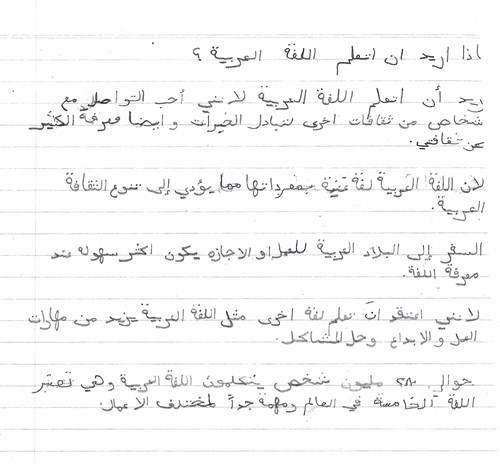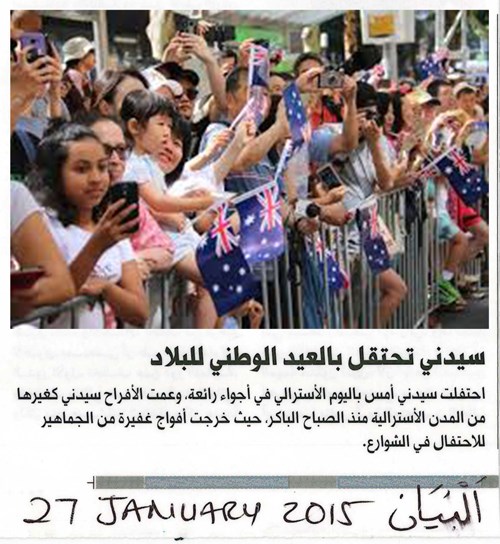Languages: Arabic - Satisfactory - Years 7 and 8 (Year 7 entry)
Portfolio summary
This portfolio of student work shows that the student uses written and spoken Arabic to exchange information (WS4) about their personal worlds and to express feelings, likes and dislikes (WS1, WS2, WS3, WS5). The student uses formulaic language for a range of classroom functions and processes (WS1, WS3), such as asking and responding to questions, following instructions, requesting repetition and asking for permission and assistance. The student uses rehearsed and some spontaneous language to engage in planning, transacting, making arrangements and negotiating. The student applies features of pronunciation and rhythm in spoken Arabic to a range of sentence types (WS1). The student locates, classifies and sequences key points of information from a range of sources and communicates information and ideas related to home, school, leisure and interests using different modes of presentation (WS4). The student shares their responses to different imaginative texts by expressing feelings and ideas about the ways in which characters, settings and events are represented. The student uses modelled language (WS2) to create imaginative texts or alternative versions of texts they have listened to, read or viewed. The student uses key grammatical forms and structures in spoken and written texts, such as articles, nouns, adjectives, personal pronouns, verbs and verb tenses, conjunctions, adverbs (WS1, WS2, WS3, WS4, WS5). The student applies writing conventions to written texts (WS1). The student uses contextual cues and textual features to translate and interpret everyday texts from Arabic into English and vice versa (WS5), and identifies similarities and differences in translation. The student creates texts in Arabic and English (WS1, WS3, WS4, WS5), identifying words and expressions that do not readily translate (WS2). The student compares ways of communicating in Arabic and English and explains how their own biography influences their cultural identity and ways of communicating (WS1, WS2, WS3).
The student identifies and applies the writing conventions of the Arabic alphabet and script, making connections between spoken and written Arabic in texts (WS1, WS2, WS3, WS5). The student identifies the structure and features of different personal, informative, and imaginative texts and provides simple explanations as to how these elements contribute to meaning (WS1, WS2). The student identifies ways in which spoken Arabic varies according to regions and countries (WS1, WS2, WS5), and provides examples of how Arabic has changed over time due to influences from other languages and cultures. The student identifies how written Arabic varies in style and in the use of formal and informal forms, according to context, situation and the relationship between participants (WS1, WS5). The student identifies ways in which language use reflects cultural ideas, thoughts, and perceptions (WS3).




